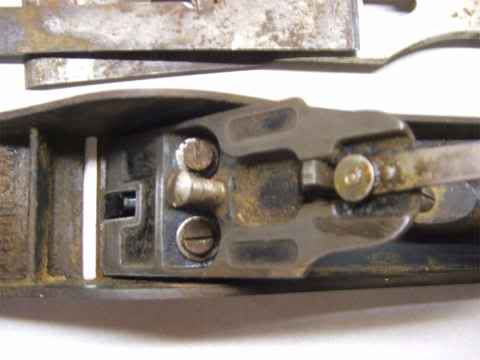TNHillbilly
45 Cal.
- Joined
- Apr 18, 2008
- Messages
- 521
- Reaction score
- 0
Got an old Stanley No.5 plane I've had for years(never used it either). I was working on the forestock piece for my rifle and decided I needed to level it out-maple! Took the blade out and honed it. Put it on the wood......chunk, chunk, chunk. Couldn't get that thing to cut nothin'! Tried adjusting every lever and knob, nothing..digs in or does nothing. Took it apart and discovered this whole 'blade holding chunk of metal thingy' was adjustable.....but how, where to set it? It obviously moves the blade back or forward. Advice, or opinions, welcome on the care and use of a hand plane!


Last edited by a moderator:




